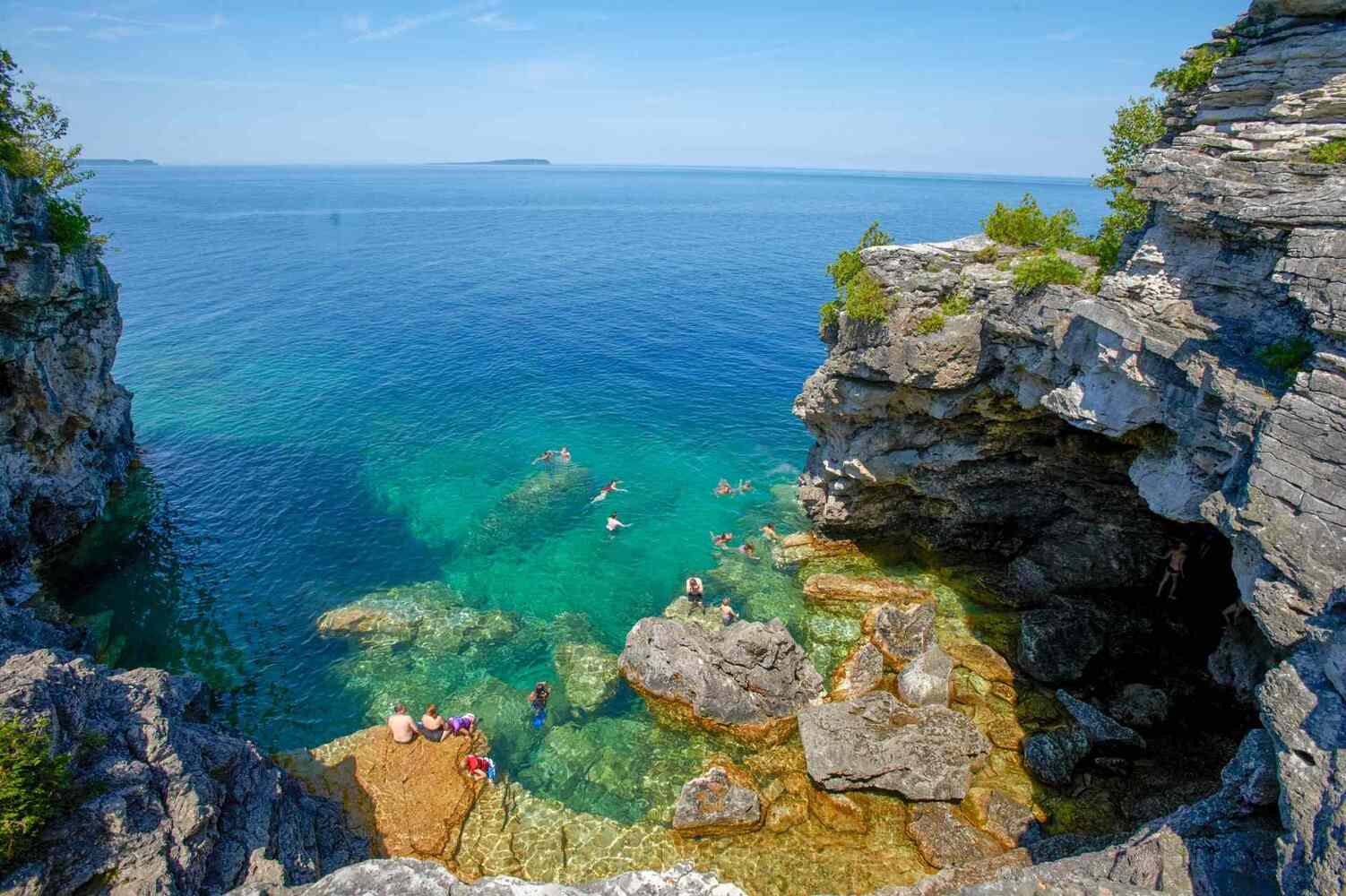Lake Huron is one of the five Great Lakes of North America, and its uniqueness goes far beyond its vast size. This lake has a rich history, remarkable natural features, geographical records, and deep cultural significance for Indigenous peoples. It serves as a vital source of freshwater, a major shipping route, a habitat for rare ecosystems, and an object of fascination for scientists and travelers alike. In this article, you will discover fascinating facts that will help you better understand the importance and scale of Lake Huron. Some of these facts you may not have known and will likely surprise you.
- Lake Huron is the second-largest of the Great Lakes by surface area, second only to Lake Superior. Its surface area is approximately 59,600 square kilometers. This makes it the fourth-largest freshwater lake in the world by surface area.
- The name of the lake comes from the French term used by colonists to refer to the Huron Indigenous people. The Hurons referred to themselves as Wendat or Wyandot. For them, the lake held spiritual significance and was deeply connected to their mythology.
- Lake Huron has the longest shoreline of all the Great Lakes. It stretches over 6,100 kilometers when including all bays and islands. This provides numerous natural harbors, beaches, and scenic landscapes.
- The lake contains more than 30,000 islands, the largest of which is Manitoulin Island. Manitoulin is the largest freshwater island in the world. It also contains several smaller lakes, including Lake Manitou, the largest lake on an island in a lake.
- Lake Huron forms a natural border between the United States (state of Michigan) and Canada (province of Ontario). It plays an important role in trade and shipping between the two countries. Shipping routes through the lake connect the interior of North America to the Atlantic Ocean.
- The lake feeds several rivers, the most well-known of which is the St. Clair River. This river connects Lake Huron to Lake St. Clair and then to Lake Erie. The waterway is a key part of the Great Lakes hydrological system.
- The average depth of Lake Huron is about 59 meters, with a maximum depth of 229 meters. Despite its size, the lake’s water remains relatively cool even in the summer. This supports the survival of cold-water fish species.
- Lake Huron is known for its exceptionally clear water, especially in the northern regions. In some areas, the lakebed is visible at depths greater than 10 meters. This makes the lake popular among divers and underwater photographers.
- In 1996, remains of an ancient stone fishing structure were discovered on the lakebed. The structure is estimated to be over 9,000 years old. This proves that humans used the lake for fishing in prehistoric times.
- The lake is home to numerous lighthouses built in the 19th century. These served as navigation aids for ships during hazardous weather conditions. Many of them are now historic landmarks and popular tourist attractions.
- More than 120 species of fish inhabit Lake Huron, including pike, trout, salmon, sturgeon, and walleye. Several non-native species were introduced to support commercial fishing. Conservation efforts are currently underway to restore native fish populations.
- The lake is often subject to strong storms, particularly in autumn. Waves during the most intense storms can reach up to 7 meters in height. Because of this, Lake Huron is sometimes referred to as an inland sea.
- The climate around Lake Huron is humid continental, with warm summers and cold winters. The lake influences local weather patterns, creating a phenomenon known as lake-effect snow. This is especially common in Michigan and Ontario.
- In 1953, Lake Huron was the site of one of the Great Lakes’ worst shipping disasters, when the SS Henry Steinbrenner sank. This event serves as a reminder that navigation on the lake has always involved risks during rough weather. Many shipwrecks still lie on the lake’s bottom.
- The shoreline of Lake Huron features unique boreal forests, wetlands, and freshwater sand dunes. These habitats are home to rare birds, insects, and plant species. Many areas are protected as national or provincial parks.
- Lake Huron supplies drinking water to millions of people. Water quality is regularly monitored by environmental agencies in both Canada and the United States. Maintaining the cleanliness of the lake is a strategic priority for both nations.
- Submerged remnants of ancient forests lie at the bottom of the lake, dating back to the Ice Age. Preserved tree roots have remained intact for thousands of years. This makes the lake an important site for paleoclimatic research.
- The lake holds great cultural importance for Indigenous peoples such as the Anishinaabe. They have used it as a source of food, a transportation route, and a place for spiritual practices. Stories and songs about Lake Huron are passed down through generations.
- Tourism on Lake Huron is thriving, with resorts, hiking trails, campgrounds, and water sports available along its shores. Popular destinations include the Bruce Peninsula, Manitoulin Island, and numerous coastal towns. During the summer, the lake attracts thousands of visitors from both Canada and the United States.
These interesting facts about Lake Huron show just how multifaceted and valuable this natural feature truly is. It holds historical, ecological, cultural, and economic significance that is difficult to overstate. Lake Huron continues to inspire, sustain, protect, and connect people on both sides of the border. Its role in the life of North America makes it a true treasure of nature.





